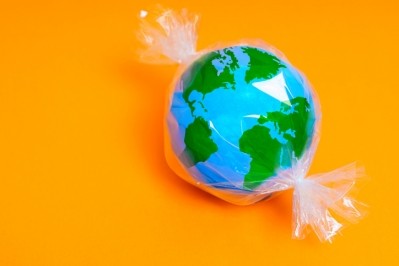Four ways confectionery brands are customizing the consumer experience

From bespoke taste experiences and nutrition to packaging and customized designs, personalisation gives confectionery brands extra opportunities to stand out from the competition beyond their formulations.
In 2024, confectionery revenue currently sits at $586.30 billion,Statista reports. As the sector is expected to scale by 5.4% by 2029, brands are exploring how personalisation can play a part in their growth strategies. Here’s how:
1. Advanced gen AI for marketing
From increased connectivity and access to information, new tech is helping to grow hyperpersonalisation and elevate consumer expectations.
Artificial intelligence (AI) is behind many of the leading confectionery brand’spersonalised marketing and interactive campaigns. Brands can use generative AI to create more engaging experiences for shoppers and fully immerse them in confectionery.
Gen AI encompasses algorithms, such as ChatGPT, that are capable of generating content such as text, audio, images and videos. Emerging in 2022, McKinsey research indicates that gen AI applications will add up to $4.4 trillion (€4.1 trillion) to the global economy every year.
My Cadbury Era uses gen AI to turn consumers’ images into the stars of classic Cadbury ads from previous years. Various poster styles, such as My Generous Era, My Showtime Era, and My Employee of the Month Era, allow individuals to envision themselves as part of the brand’s 200-year-old history.
In May, Starburst introduced its ‘Different Every Time’ advertising initiative. The campaign used gen AI to show consumers the 479 million different ways to taste a 12-pack of original Starburst. It integrates gen AI with traditional marketing platforms such as television, alongside innovative strategies like employing AR lenses on Snapchat and designing flavour-inspired musical encounters on Spotify.
In its 'The Special One' campaign, Snickers introduced its José Mourinho AI clone. It used an eight-stage AI pipeline to create a ‘chain of thought’ architecture and created the impression that José Mourinho coaching fans to sort out their mistakes.
2. Mass phygital tech
To appeal to consumers, confectionery brands are investing in more sophisticatedin-storeandonlinesmarttechnologies, like augmented reality (AR) and virtual reality (VR).
Shoppers can use their smartphones to access information about brands, products, ingredients, sourcing and production methods by integrating AR and QR codes. Additionally, tech like this enables consumers to take advantage of promotions, engage in interactive games, explore immersive brand stories and access exclusive content.
At this year’s Sweets and Snacks Expo, Hershey announced it’s using an AR system to generate an image of what a product will look like in-store to help retailers plan their designs. By tracking its merchandise and where its products are placed in-store, brands can get insights into how confectionery placements will likely impact sales and shoppers’ overall in-store experiences.
3. Personalised nutrition
A2024 research studyexplored the potential of gen AI in personalised nutrition. Gen AI developments have the potential to enhance wellbeing, particularly with personalised dietary support. However, ChatGPT often failed to meet the study participants’ personalised goals and needs and could not understand their requests, prompting concerns over its ethics.
Another 2024 research studylooks into the future of food, which includes advancing tech while ensuring safety and helping consumers to accept innovations. Researchers found that shifting food processing technologies and industry 4.0 applications will grow in popularity as the food industry looks for sustainable, nutritious and environmentally friendly production.
GLP-1 nutrition platforms are emerging in the food sector and functional confectionery is broadening opportunities in the confectionery space. These focus on providing customised dietary guidance and personalised support that offers nutrition advice. In May, Confectionery News reported thatMondelez is eager for snack innovation to push confectionery launches, especially personalisation in snacking choices.
4. DIY designs for gifting
With the growing demand for premium chocolate, Mondelez is creating personalised gifting options in various markets. Its Toblerone brand has announced it is offering a more personalised gifting experience through its new online platform. This platform allows consumers to select various formats, flavours and sleeve designs and add their message to packaging.
Similarly, Nestlé has leveraged the personalised gifting trend with itsnew sustainable chocolate rangein airports. Nestlé’s Sustainably Sourced chocolate range was made available exclusively in airports from Summer 2024. Travellers can customise their chocolate bars by including consumers’ messages on the product sleeves.
Mars Wrigley’s personalised packaging options enable US consumers to customise their M&M’s by adding theirdesigns and messages to packaging, whileMonty Bojangles has created new chocolate barsfeaturing personalised embossed characters on each square, allowing customers to create secret messages.













